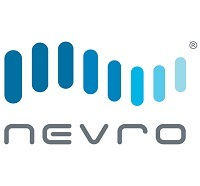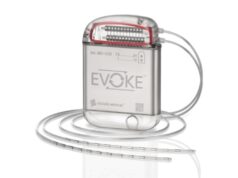 Nevro Corporation recently announced the publication of 24-month data from the SENZA painful diabetic neuropathy (PDN) randomised controlled trial (RCT)—the largest RCT to evaluate spinal cord stimulation (SCS) as a PDN treatment, the company claims—in Diabetes Research and Clinical Practice.
Nevro Corporation recently announced the publication of 24-month data from the SENZA painful diabetic neuropathy (PDN) randomised controlled trial (RCT)—the largest RCT to evaluate spinal cord stimulation (SCS) as a PDN treatment, the company claims—in Diabetes Research and Clinical Practice.
Published 24-month data from the SENZA-PDN RCT evaluated the long-term efficacy of high-frequency 10kHz SCS to treat refractory PDN, and show that patients who received a high-frequency 10kHz SCS implant and conventional medical management (CMM), compared to CMM alone, experienced durable pain relief as well as significant improvements in both health-related quality of life (HRQoL) and sleep at 24 months post-implantation.
Furthermore, most participants experienced neurological symptom improvements, including in motor, sensory and reflex function. These long-term data further support that 10kHz SCS is a safe and highly effective therapy for PDN, as well as a therapy that demonstrates durable quality-of-life improvements, Nevro states in a press release.
“The 24-month data from the SENZA-PDN RCT show us high-frequency SCS is a viable, long-term relief solution for people with PDN, which is particularly encouraging for a condition that naturally worsens over time,” said lead principal investigator Erika Petersen (University of Arkansas for Medical Sciences, Little Rock, USA). “These results further validate not only the efficacy of high-frequency 10kHz SCS for pain relief, but also show profound improvements in quality of life, sleep, and neurological function.”
Regarding pain relief, Nevro further claims, the SENZA-PDN RCT 24-month data demonstrate the following benefits of 10kHz SCS therapy:
- At 24 months, 10kHz SCS reduced pain by a mean of 79.9% compared to baseline, with 90.1% of participants experiencing ≥50% pain relief
- A DN4 score ≥4 is consistent with clinically confirmed PDN—in the 10kHz SCS recipients, the proportion with a DN4 score <4 increased significantly from 3.9% at pre-implantation to 48.9% at 24 months (p<0.001)
Additional findings from the recently published data are as follows:
- At 24 months, 65.7% of implanted patients exhibited clinically meaningful improvements over study baseline in sensory, motor or reflex function without worsening in any category
- HRQoL significantly improved with 10kHz SCS, based on the EuroQol 5-Dimensional 5-Level (EQ-5D-5L) questionnaire—among all implanted patients, the mean EQ-5D-5L index value increased by 0.146 from pre-implantation to 24 months, which is 2.9–4.9 times the minimally important difference for people with type 2 diabetes
- Baseline sleep quality was poor among all study participants, as shown by a mean score on the pain and sleep questionnaire three-item index (PSQ-3; 0–10cm scale) of 6.5cm at pre-implantation, but treatment with 10kHz SCS significantly reduced pain interference with sleep in the group of all implanted patients over 24 months—as demonstrated by a 65.5% decrease in the mean PSQ-3 score, from 6.5 at pre-implantation to 1.9 at 24 months
- The incidence and type of procedure-related complications were comparable to those reported in the SCS literature for all patient populations, with five (3.2%) SCS systems being explanted due to infection and no devices being explanted due to lack of efficacy
In the release, Nevro also states that no other SCS treatment for PDN has exhibited the potentially disease-modifying effects demonstrated by Nevro HFX in improving neurological function—and, comparable to the six- and 12-month SENZA-PDN study outcomes, these 24-month results confirm robust and long-lasting beneficial effects with 10kHz SCS in PDN patients.
Nevro’s SENZA-PDN trial enrolled 216 patients with refractory PDN. In total, 142 patients implanted with Nevro’s high-frequency 10kHz SCS system—Nevro HFX—were followed for 24 months, including 84 initial 10kHz SCS-plus-CMM recipients and 58 crossovers from CMM alone.
The study aimed to provide high-level evidence to aid clinical decision-making, albeit with some limitations, according to the company. These include risks of biased outcomes and potential placebo effects; the possible impact of missed follow-up visits on study results; and limitations related to interpreting the observed neurological improvements.









